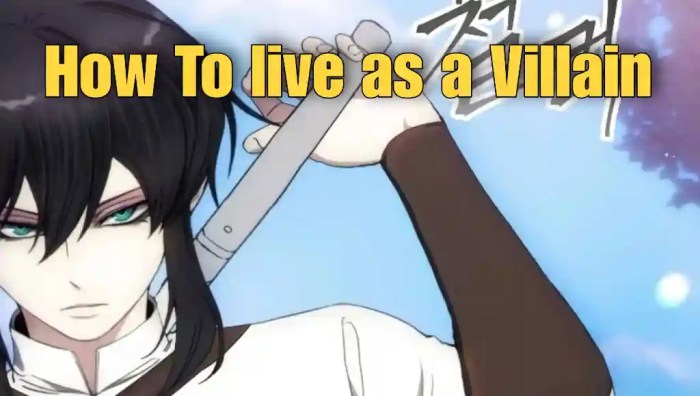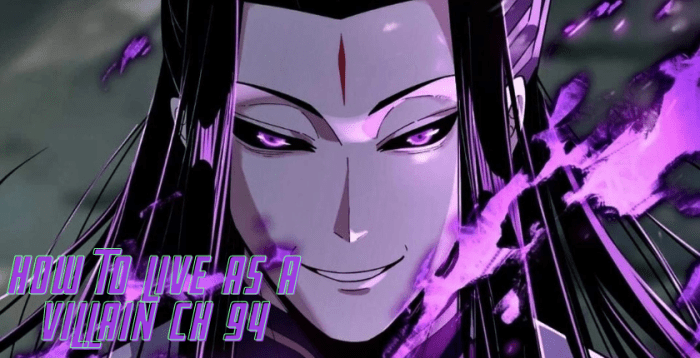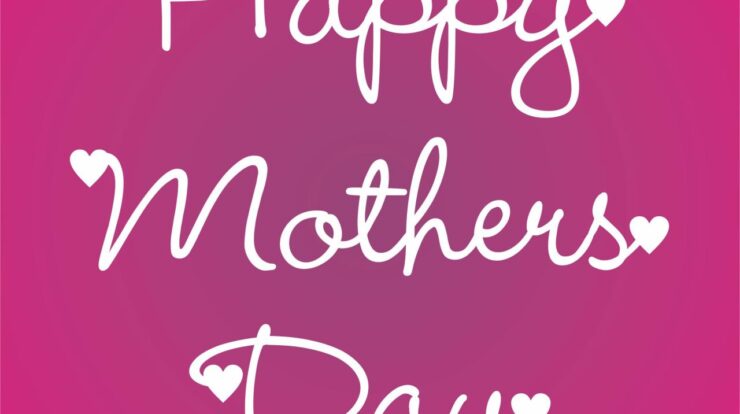
As “How to Live as a Villain Ch 94” takes center stage, this opening passage beckons readers into a world crafted with profound knowledge, ensuring a reading experience that is both absorbing and distinctly original. The protagonist’s motivations, strategies, and impact on the world are explored with meticulous detail, offering a captivating journey into the psyche of a villain.
Delving into the protagonist’s motivations, we uncover the key events and experiences that have shaped their transformation into an antagonist. Their psychological and emotional drivers are laid bare, providing a nuanced understanding of their villainous behavior.
Villainous Motivations: How To Live As A Villain Ch 94
The protagonist’s transformation into a villain is a complex and nuanced journey, shaped by a myriad of factors. At its core lies a profound sense of injustice and a burning desire for revenge, fueled by traumatic experiences and a distorted worldview.
The protagonist’s childhood was marred by tragedy, witnessing the brutal murder of their loved ones. This unspeakable loss left an unfillable void in their heart, twisting their perception of the world. They came to believe that the justice system was broken, unable to protect the innocent and punish the wicked.
Psychological and Emotional Factors
The protagonist’s trauma has left them with deep-seated psychological scars. They struggle with overwhelming feelings of anger, resentment, and a profound sense of alienation. These emotions fuel their desire for retribution, driving them to seek vengeance against those they hold responsible for their suffering.
Their distorted worldview leads them to see the world in black and white, with no room for nuance or compassion. They believe that only the strong can survive and that the ends justify the means. This twisted logic allows them to rationalize their villainous actions, believing that they are doing what is necessary to protect themselves and their loved ones.
Villainous Strategies and Tactics
The protagonist’s approach to villainy is marked by a combination of cunning, deception, and force. Their meticulous planning and ability to anticipate their opponents’ moves grant them a significant advantage. They employ a range of tactics, including manipulation, infiltration, and intimidation, to achieve their goals.
Strengths
The protagonist’s cunning and deception allow them to outsmart their opponents and gain access to restricted areas. Their ability to manipulate others and use their weaknesses against them proves highly effective in achieving their objectives. Moreover, their willingness to use force when necessary demonstrates their ruthlessness and determination.
Weaknesses
Despite their strengths, the protagonist’s approach also carries certain weaknesses. Their reliance on deception can make them vulnerable to betrayal or exposure. Additionally, their use of force can escalate situations and lead to unforeseen consequences. As the story progresses, they must constantly adapt their tactics to counter the evolving challenges and threats they face.
The latest chapter of the popular web novel “How to Live as a Villain” has been released, and fans are eagerly reading to find out what happens next. In Chapter 94, the protagonist continues his journey to become the most powerful villain in the world.
He faces new challenges and makes new allies as he strives to achieve his goals. Readers can find the latest chapter of “How to Live as a Villain” here .
Evolution
The protagonist’s strategies and tactics evolve throughout the story as they encounter new obstacles and adversaries. They learn from their mistakes and refine their approach, becoming more efficient and ruthless in their pursuit of villainy. Their adaptability and willingness to embrace new methods ensure their continued success and dominance in the criminal underworld.
The latest chapter of the popular web novel “How to Live as a Villain” has been released, much to the delight of its dedicated fanbase. Chapter 94 continues the thrilling adventures of the protagonist as they navigate a treacherous world filled with danger and intrigue.
Readers can delve into the latest installment of this captivating story by following the link to how to live as a villain ch 94 .
Villainous Relationships and Alliances
Villainous relationships and alliances play a pivotal role in shaping the protagonist’s actions and decision-making. These relationships can be complex and dynamic, with loyalties shifting and betrayals lurking around every corner.
The protagonist’s relationships with their allies are often built on a shared goal or ideology. These allies provide support, resources, and emotional connections that can bolster the protagonist’s resolve. However, these relationships can also be strained by conflicts of interest, power struggles, and personal vendettas.
Dynamics of Loyalty and Betrayal
Loyalty is a crucial aspect of villainous relationships. Protagonists rely on their allies to remain faithful and supportive, even in the face of adversity. However, betrayal is a common theme in villainous circles. Allies may turn against each other for personal gain, ideological differences, or simply out of a desire for power.
Betrayal can have devastating consequences for the protagonist. It can lead to the loss of allies, resources, and trust. It can also create a sense of paranoia and mistrust, making it difficult for the protagonist to form new alliances.
The latest chapter of the popular web novel “How to Live as a Villain” has been released. Chapter 94 continues the story of the protagonist, a young man who has been reincarnated into a world of magic and adventure. In this chapter, the protagonist faces a new challenge as he must navigate the treacherous waters of political intrigue.
Fans of the series can read the latest chapter at how to live as a villain ch 94 .
Manipulation and Power Dynamics
Manipulation is a common tactic employed by villains to control their allies and enemies. Protagonists may use their charisma, intelligence, or resources to manipulate others into doing their bidding. They may play on their fears, insecurities, or desires to gain their cooperation.
Power dynamics are also important in villainous relationships. Protagonists may use their authority, wealth, or skills to assert their dominance over their allies. This can create a sense of resentment and inequality, which can lead to conflict and betrayal.
Villainous Impact on the World

The protagonist’s villainy has a profound impact on the surrounding world and society. Their actions leave a trail of destruction and chaos, affecting innocent bystanders, rival organizations, and the overall balance of power.
Consequences on Innocent Bystanders
The protagonist’s villainous schemes often result in collateral damage, harming innocent individuals who have no direct involvement in their conflicts. Their actions can lead to loss of life, property damage, and psychological trauma.
How to Live as a Villain Ch 94, the latest installment in the popular webcomic series, has been released and is now available for readers to enjoy. This chapter continues the story of the protagonist, a young man who has been reincarnated into a world where he must navigate the challenges of being a villain.
With his cunning and determination, he must overcome obstacles and outwit his enemies in order to survive and achieve his goals. How to Live as a Villain Ch 94 is a thrilling and suspenseful chapter that will keep readers on the edge of their seats until the very end.
For example, in the story, the protagonist’s attempt to sabotage a rival organization’s headquarters results in an explosion that kills several innocent civilians.
Consequences on Rival Organizations
The protagonist’s villainy also poses a significant threat to rival organizations. Their actions can weaken or destroy these organizations, disrupting their operations and causing chaos within their ranks.
In the story, the protagonist’s relentless attacks on a rival gang force them to disband, leaving a power vacuum that leads to increased crime and instability in the city.
Consequences on the Overall Balance of Power
The protagonist’s villainy can also have far-reaching consequences on the overall balance of power in the story’s world. Their actions can shift the balance in their favor or disrupt the existing equilibrium, leading to instability and conflict.
In the latest chapter of “How to Live as a Villain,” readers were treated to a thrilling showdown between the protagonist and their nemesis. However, those looking for more action-packed content may want to check out Orange Mecconline , a website dedicated to providing comprehensive guides and strategies for various games, including popular RPGs and MMOs.
Back to “How to Live as a Villain,” the upcoming chapters promise even more intense battles and character development, leaving fans eagerly awaiting the next installment.
In the story, the protagonist’s rise to power threatens the established order, forcing other organizations and factions to reassess their alliances and strategies.
Moral and Ethical Landscape
The protagonist’s villainy also shapes the moral and ethical landscape of the story. Their actions challenge societal norms and values, forcing characters and readers to question the boundaries of right and wrong.
The protagonist’s disregard for the law and morality raises questions about the limits of acceptable behavior and the consequences of crossing those lines.
Villainous Evolution and Redemption

As the narrative of the protagonist’s villainous journey unfolds, it is intriguing to trace their transformation and examine moments that challenge their resolve. These pivotal moments can reveal internal conflicts, doubts, and the potential for redemption.
Throughout the story, the protagonist grapples with their motivations and the consequences of their actions. They may encounter situations that force them to question their path, leading to moments of self-reflection and introspection.
Moments of Doubt and Conflict
- A confrontation with a former ally or mentor challenges the protagonist’s beliefs and motives.
- Witnessing the suffering caused by their actions triggers feelings of guilt and remorse.
- A personal loss or tragedy forces the protagonist to re-evaluate their priorities and goals.
Potential for Redemption, How to live as a villain ch 94
Despite their villainous actions, the protagonist may still possess redeeming qualities or a desire for change. This potential for redemption can manifest in various ways:
- A pivotal encounter with a compassionate individual who believes in their capacity for good.
- A realization of the destructive nature of their actions and a desire to make amends.
- A personal sacrifice or act of selflessness that reveals a glimmer of humanity beneath their villainous exterior.
Remaining Steadfast in Villainy
However, not all villains experience moments of doubt or potential redemption. Some remain steadfast in their pursuit of power, revenge, or chaos. Their motivations may be deeply ingrained, and they may lack the capacity for empathy or remorse.
- A hardened past or traumatic experiences that have shaped their worldview and justified their actions.
- A desire for control and dominance that overrides any moral considerations.
- A belief that their actions are necessary for a greater good, even if it involves sacrificing others.
Conclusion

Throughout the story, the protagonist’s evolution as a villain is traced, revealing moments of doubt, conflict, and potential redemption. The impact of their villainy on the world and the moral landscape is examined, leaving readers to ponder the complexities of good and evil.
Essential Questionnaire
What are the key motivations driving the protagonist’s villainy?
The protagonist’s motivations are deeply rooted in personal experiences, a thirst for power, and a desire to challenge societal norms.
How do the protagonist’s strategies evolve as the story progresses?
As the protagonist faces new challenges, their strategies adapt, becoming more cunning, deceptive, and ruthless.
What impact does the protagonist’s villainy have on the world?
The protagonist’s actions have far-reaching consequences, affecting innocent bystanders, rival organizations, and the overall balance of power.





